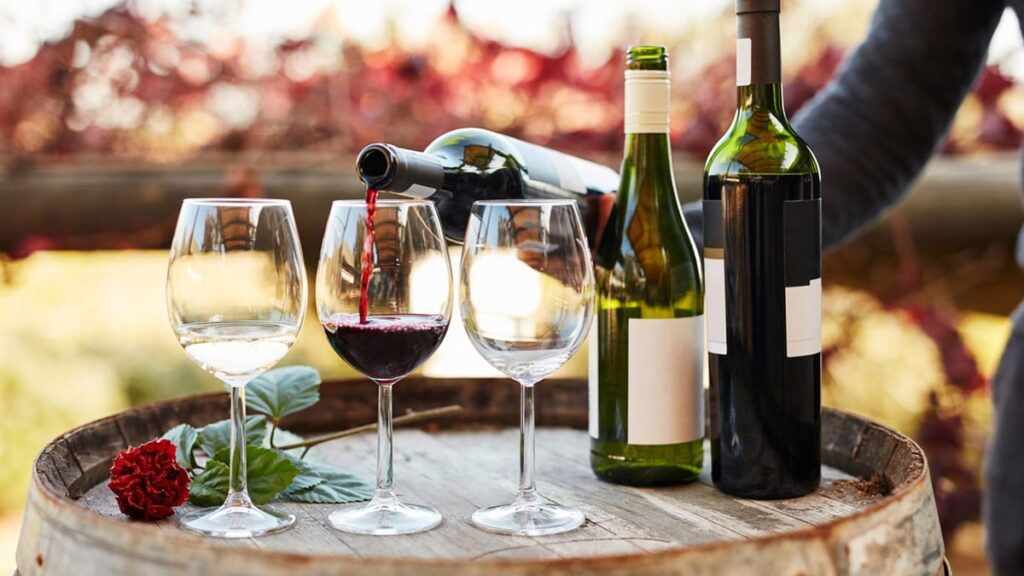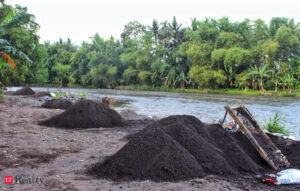Wine Glossary: Common Terminology Every Wine Lover Should Know

Wine is a world rich in history, culture, and complexity, filled with a unique vocabulary that can often be confusing to newcomers. Whether you’re a seasoned wine connoisseur or just starting your wine journey, understanding common wine terminology can enhance your appreciation for this complex and fascinating beverage. Plus, it will also enhance your experience of tasting and selecting wines when you are visiting a vineyard, dining at a restaurant, or hosting a wine-tasting session. We bring you a comprehensive wine glossary that every wine lover should familiarize themselves with.
Also Read: Can Wine Be Healthy? 6 Amazing Health Benefits You May Not Know
Here’s a glossary of essential terms that every wine lover should know:
A:
- Acid: The tart or tangy taste in wine, often described as “bright” or “crisp.”
- Aerate: To expose wine to oxygen, which can help it develop and reveal its flavours.
- Alcohol Content: The percentage of alcohol by volume in a wine, typically ranging from 10% to 15%.
- Appellation: A specific wine-producing region with defined boundaries and regulations.
- Aroma: The primary scents of a wine, often described as floral, fruity, or earthy.
B:
- Body: The perceived weight or fullness of a wine in the mouth.
- Bouquet: The secondary aromas of a wine, which develop after the wine has been aged.
- Brett: A type of yeast that can produce a buttery or funky flavour in the wine.
- By the Glass: A wine served by the glass, rather than by the bottle.
Also Read: This Is What Your Wine Preference Says About You – Why Red Wine Is A Healthier Option
Wine is a popular drink consumed all over the world.
C:
- Cellar: A place where wine is stored.
- Cellar Selection: A wine that is chosen from a winery’s cellar for its quality and age.
- Champagne: A sparkling wine made in the Champagne region of France.
- Cabernet Sauvignon: A red wine grape variety known for its bold flavours and high tannins.
- Chardonnay: A white wine grape variety known for its versatility and ability to produce wines with a wide range of flavours.
D:
- Decant: To pour wine from one bottle to another to allow it to breathe and open up its flavours.
- Denomination: A term used to describe the origin and quality of a wine.
- Dessert Wine: A sweet wine typically served with dessert.
- Dry: A wine with little or no residual sugar.
F:
- Finish: The lingering taste of a wine after it has been swallowed.
- Fortified Wine: A wine that has had alcohol added to it, such as port or sherry.
- Full-Bodied: A wine with a rich, heavy texture.
G:
- Gewurztraminer: A white wine grape variety known for its spicy, floral aroma.
- Grape Variety: The type of grape used to make a wine.
H:
- Herbaceous: A wine with a grassy or plant-like aroma.
- High Tannins: A wine with a firm, astringent texture.
I:
- Intense: A wine with strong flavours and aromas.
L:
- Legs: The streaks of wine that run down the inside of a glass when it is swirled.
- Light-Bodied: A wine with a delicate, thin texture.
M:
- Medium-Bodied: A wine with a moderate body and texture.
- Merlot: A red wine grape variety known for its soft tannins and fruity flavours.
Also Read: Red Wine Or White Wine: Which Is Better For Your Health?

Wine comes in different varieties.
Photo Credit: iStock
O:
- Oak: The flavour imparted to a wine by ageing it in oak barrels.
- Off-Dry: A wine with a slightly sweet taste.
P:
- Pinot Noir: A red wine grape variety known for its elegance and complexity.
- Port: A fortified wine from Portugal.
S:
- Sauvignon Blanc: A white wine grape variety known for its zesty, citrus flavours.
- Screw Cap: A type of wine bottle closure that is becoming increasingly popular.
- Shiraz: A red wine grape variety also known as Syrah.
- Sparkling Wine: A wine with bubbles, such as champagne or prosecco.
T:
- Tannins: The astringent compounds in wine that give it a firm texture.
- Terroir: The unique characteristics of a wine that are influenced by the climate, soil, and other environmental factors of the region where it is produced.
- Toasty: A wine with a flavour reminiscent of toasted bread or nuts.
- Vintage: The year in which a wine was made.
As you continue to explore the world of wine, you will discover new terms and develop your own palate. Cheers to your journey through the world of wine!
About Neha GroverLove for reading roused her writing instincts. Neha is guilty of having a deep-set fixation with anything caffeinated. When she is not pouring out her nest of thoughts onto the screen, you can see her reading while sipping on coffee.








